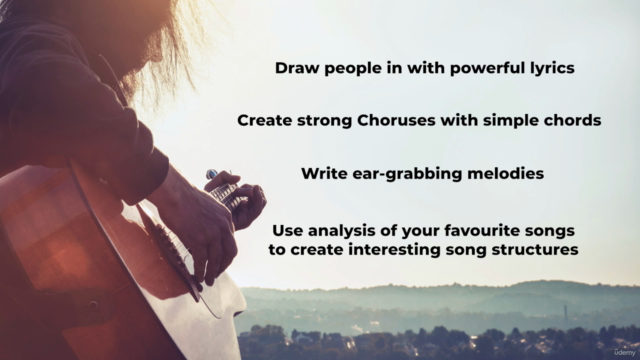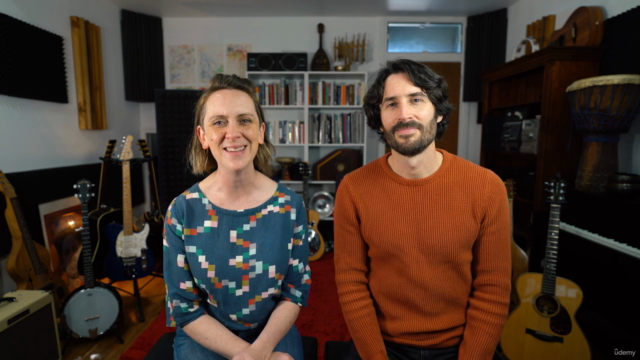The 5 Most Powerful Songwriting Exercises...Revealed!

Why take this course?
🚀 Step 2: Idea Generation and Lyrics
Welcome back! Now that we've set up our song structure and chord progressions, it's time to focus on the heart of your song—the lyrics. Lyrics are what convey the story, emotion, and message of your song. They can make or break your composition, so let's dive into this vital step with guidance, real-life examples, and insights from industry experts Keppie and Benny.
The Process:
-
Inspiration: Find a theme or subject for your lyrics. This could be anything from a personal experience to a broader social issue. The key is to choose something that resonates with you and that you feel passionate about.
-
Brainstorming: Start brainstorming ideas related to your chosen theme. Write down any words, phrases, or images that come to mind. Don't censor yourself at this stage—the goal is quantity over quality.
-
Central Image: Create a central image that represents the essence of your song. This could be a metaphor, literal scene, or a powerful symbol. Your central image should be something that can carry the weight of the song's emotion and message.
-
Rhyme Scheme: Decide on a rhyme scheme that complements your melody and structure. Common schemes include AABB (like in "Yesterday" by The Beatles) or ABAB (as in "Blowin' In The Wind" by Bob Dylan).
-
Writing Lyrics: Begin writing your lyrics, using the brainstormed ideas, central image, and chosen rhyme scheme as a foundation. Try to convey the story or message of your song clearly and poetically.
-
Refinement: Refine your lyrics by editing for flow, sense, and clarity. Read them aloud to see if they scan well with the melody you've set. Make adjustments as needed.
-
Feedback: Share your lyrics with trusted friends or fellow songwriters to get their feedback. Use their input constructively to improve your song.
Real-Life Examples:
-
"Yesterday" by The Beatles - The central image here is a lost love, represented by the recurring line "Yesterday." The rhyme scheme (AABB) supports the melancholic melody and underscores the nostalgic theme of the song.
-
"Blowin' In The Wind" by Bob Dylan - This song uses a series of questions to convey its message about war and peace. The central image is the wind, which symbolizes the passage of time and the futility of conflict. The rhyme scheme (ABAB) keeps the song's rhythm steady and reflective.
Gold-Star Song Examples:
-
"Hallelujah" by Leonard Cohen - This classic song has multiple verses that explore themes of love, desire, and betrayal. The central image is a hallelujah, which is used to tie the disparate elements of the story together.
-
"Landslide" by Fleetwood Mac - Stevie Nicks' lyrics in this song depict a moment of realization and the decision to change one's life direction. The central image of "landslide" captures the enormity of the change she is facing.
Tips for Effective Lyrics:
-
Be specific: Use vivid, descriptive language that paints a picture in the listener's mind.
-
Show, don’t tell: Let your lyrics show the emotional journey rather than just describing it.
-
Use metaphors and similes: These can add depth and interest to your lyrics.
-
Keep it simple: Sometimes less is more. A few powerful words can be more effective than a long, convoluted verse.
-
Be genuine: Write about what you know, feel, and believe in. Authenticity resonates with listeners.
Your Turn:
Now it's your turn to generate lyrics for your song. Remember the techniques we've discussed, and let your creativity flow. Don't worry if it doesn't come out perfect on the first try; songwriting is a process of creation and refinement. Keep writing, keep experimenting, and have fun with it!
In the next step, we'll bring all the elements together to create a complete song. Stay tuned!
Course Gallery




Loading charts...